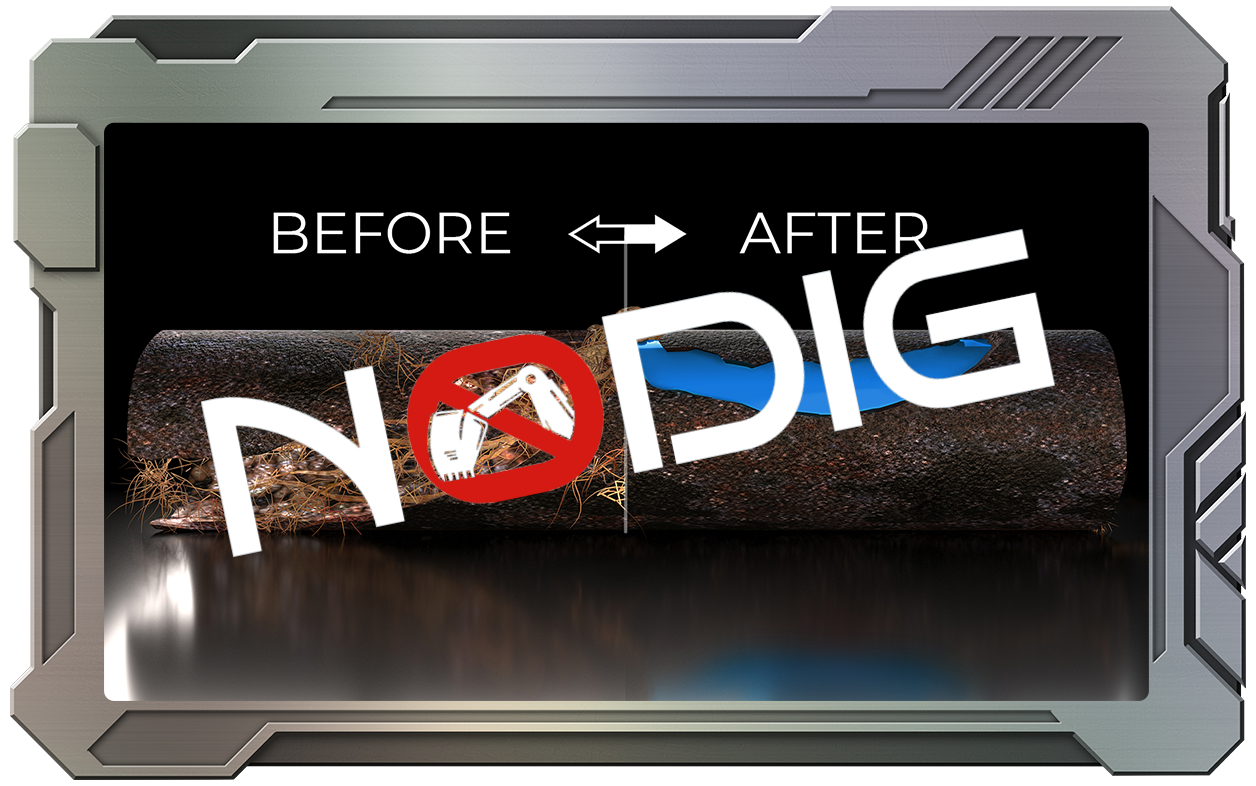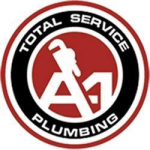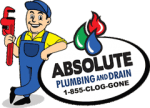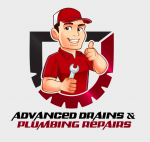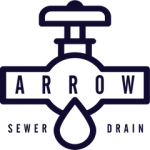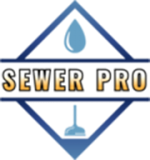
Sewer line replacement or repair is typically outside the top of a homeowner's list of home improvement projects.
Issues with the sewer system or a septic tank can bring on blockages, reductions in water pressure, and even sewage backups.
Sewer line replacement costs depend on various criteria, including the line's location, construction, the length of the part that needs to be replaced, and the root cause of the issue.
Even though repairing or replacing a sewer line isn't the most spectacular home improvement project, it should be done immediately.
This sewer line replacement cost guide will go through pricing variables for replacing a sewer line, money-saving tips, and more!
What Happens in a Sewer Line Replacement?
Sewer lateral is another name for the main sewer line that connects your house to the city's sanitary sewer system.
The portion of the sewage line on your property that drains stormwater from the street is not your responsibility, but you are liable for any repairs necessary if it cracks, clogs, or leaks.
The same holds for lateral sewer connections to a home septic tank. Because of these underground pipes, replacing them requires fully digging up the ground.
It is no longer needed in other cases, such as trenchless repair. Yet, replacing an entire sewage line is a sizable, pricey task that a licensed plumbing contractor can only do.
Two ways to fix sewer lines are: digging a trench around the pipe or repairing a trenchless sewer line.
Trenchless sewer repairs use minimal to no digging and are time and money efficient.
Technicians enter the sewer system with a video camera to begin the procedure and suggest fixes. Then, one of the following two plumbing repairs is typically advised:
- Pipe lining: To line your sewer line with an inflatable tube coated in epoxy, use it if the damage to your sewage pipe is minor. The tube is then expanded, pushing against the current line. The epoxy hardens and cures while in contact with the old pipe, stopping the leaking sewer line. The sewer line can then be fixed when the inflatable tube has been removed.
- Pipe bursting: Pipe bursting is a more invasive trenchless sewer repair used when a sewage system is too damaged to be repaired with pipelining. The old pipe is destroyed by technicians feeding a cone-shaped bit through it, and a new pipe is installed immediately. Although it costs more and takes longer, this method doesn't necessitate deep excavation.
Before replacing the line, follow this tutorial on how to unclog a sewer pipe.
How Much Are the Sewer Line Replacement Costs?
Sewer line replacement often costs $4,000 on average. If there are no significant hurdles, the price for a full replacement of the sewer line ranges from $3,000 to $6,000.
Small localized sewer repairs begin at around $650 and range up to $7,500 for 30 feet.
Sewer line installation costs typically range from $50 to $200 per foot, though they might vary depending on the type of pipe used and how hard it is to reach the existing pipe.
Also, your project may incur additional sewer line costs due to landscaping, backfilling, and excavation.
Factors That Affect the Sewer Line Replacement Cost
The eventual sewer line replacement cost might depend on various factors. The following factors can affect the final price you'll pay:
- Distance
- Sewer inspection
- Installation and labor
- Pipe location
- Trenchless or conventional repair
- Yard repair
- Sewer line material
- The root of the issue
Distance
The distance your sewer pipes must go from your home to a city hookup next to a street varies based on how your house was built and where you live.
Long lines require more pipe, digging, installation time, and workforce. Unfortunately, longer pipes necessitate more connectors, increasing their vulnerability.
The length and expense of the pipes will also increase with any bends or elbows.
Running a new pipe can cost $50 to $250 per foot, including materials and labor, depending on the type of pipe used.
Again, not all pipes need to be replaced, so talk to an expert about your options.
Inspection
You must arrange a camera inspection as soon as you know of sewer line issues.
A professional often advises a sewer camera inspection to help identify the damage's origin before moving forward with the replacement operation.
A technician attaches a camera to the end of a long hose and snakes it through the whole sewer system for these $100 to $500 video inspections.
When there are several symptoms inside a home with multiple probable sources, this is sometimes the quickest and least invasive way to evaluate a sewer issue.
When simple drain snaking fails to speed up a slow drain, camera checks—typically more costly than drain cleaning—are often used to spot more serious issues than a sewer line clog.
Here, we'll go into more depth about the Hydro jet sewer line cleaning technique.
Installation and Labor Costs
Sewer pipe repair is labor-intensive, so plumbers' or contractors' fees may be excessive.
It's challenging to determine what portion of the entire sewer line cost is spent on labor because this isn't a do-it-yourself project.
Depending on their degree of competence, experienced plumbers typically bill between $50 and $150 per hour.
Professionals that perform trenchless pipe repair and replacement typically charge a flat rate per foot.
You may have to spend an additional $500 to $20,000 for hookup to the city sewer once the plumber installs the line.
Location
The sewer line's location significantly influences the sewer line replacement cost. If the sewer line is hard to reach or enclosed in a concrete slab, the pipe's position may incur extra costs.
You will be responsible for demolition and repair if the plumber or contractor needs to cut through a wall, dig a trench beneath a basement, or destroy a driveway.
If breaking through concrete is necessary to reach the pipes, basement sewer line replacement might cost hundreds of dollars in labor.
Even though installing a sewer line is typically $2,914, in extreme circumstances that necessitate longer pipe runs and extensive trenching, the price can reach $25,000.
An excavator is required to break up the concrete if repairs are made directly underneath or through a concrete slab, which drives the price to $300 to $350 per linear foot.
You can find the guide to finding the sewer line's precise location here.
Trenchless or Traditional Repair
Not every sewer line replacement follows the same process.
Digging a ditch along the pipe's length is a traditional method of replacing sewer pipes. The pipe is then taken out and changed with a fresh one.
This alternative approach is direct, but there are certain limitations, one of which is what it does to a yard.
If the homeowner and contractor don't take the right safeguards, it might ruin years of landscaping. But when a pipe collapses, the only choice is removal.
Ordinary sewer line trenching costs homeowners between $400 and $1,200 for every 100 linear feet.
A trenchless sewage repair or replacement may be an option, provided the damaged pipe hasn't collapsed.
The entire process is quicker, often less expensive, and more environmentally friendly than alternative ways.
Professionals that perform trenchless pipe repair and replacement typically charge a flat rate per linear foot. Trenchless sewer line replacement typically costs $60 to $250 per foot.
While trenchless sewer line repair and replacement are less disruptive than conventional methods, you may have noticed that they are relatively inexpensive.
Trenchless repair does not require excavation or yard restoration, so it may be less expensive in the long run, especially if your yard has many barriers or your pipes are covered in concrete.
Discover why sewer line replacement is so costly.
Yard Repair
A complete sewer line must be successfully replaced, which necessitates a lot of digging and rummaging. In other words, your yard will need some sewer line work once the job is finished.
Most contractors include the basic cleanup in their total estimates, but if the task requires more, landscaping may be needed to restore your yard to its pre-replacement state.
The typical sewer line cost of $3,000 to $6,000 excludes potential yard or driveway repairs required after the trench has been filled up.
Resurfacing a lawn costs between $0.50 and $2 per square foot, while replacing an asphalt driveway costs roughly $15 per square foot.
Sewer Line Material
What kind of material is a sewer line typically made from? PVC, ABS, and copper are now the three most popular types of pipes used for sewer lines.
Each has a different price point and ideal application. Cast iron is occasionally used as a sewer pipe material.
- PVC: Due to its lightweight, low cost, and ease of installation, polyvinyl chloride (PVC) shines as a sewer pipe material. Costs range from $80 to $370 for 48 linear feet of PVC piping with a four-inch standard diameter. Although PVC is practical, it isn't quite as strong as copper or cast iron.
- Acrylonitrile butadiene styrene (ABS): This synthetic material is frequently used to make sewer pipes. PVC and ABS are comparable in that they are both inexpensive and simple to install. Forty-eight linear feet of ABS piping with a four-inch standard diameter can be purchased for anywhere between $130 and $450. Even though some studies have linked the chemical component BPA (Bisphenol A) to cancer, ABS is more durable than PVC.
- Copper: Although plastic pipes are intended to be less expensive, incorporating genuine metals like copper starts to drive up costs. Copper is far more replaceable than cast iron but not as easily as PVC, and is much more durable than plastic pipes. Copper piping 48 linear feet long costs between $3,900 and $4,300.
- Cast iron: This robust metal has somewhat lower costs while providing the same toughness and lengthened lifespan as copper. The price range for 48 linear feet of cast iron piping is between $1,100 and $3,600.
The Root of the Issue
Different causes of a faulty sewer line each have a corresponding sewer line replacement cost. For instance, removing tree roots from a sewer pipe can cost anything from $100 to $600.
The pipe may still need to be repaired or replaced if any damaged sections need to be removed in addition to the roots.
The average price to replace a damaged pipe is $1,050, but actual costs will depend on the type of pipe, where it is located, and how badly damaged it is.
Finally, since a full replacement is needed, a collapse in the sewage system is sometimes the most expensive issue to fix.
The cost of collapsed sewer pipe replacement or repair ranges from $50 to $250 per foot and can be brought on by sinking earth, continuous overhead traffic, or large construction vehicles.
Permits
Due to sanitary issues and potential biohazards, almost all sewage line-related work will need a permit. Before doing any work, always ensure that permission has been received.
Most of the time, the contractor handles permits, but a homeowner should always check to see if one has been obtained for their sewage line project.
Even though not all plumbing work needs a permit because of sanitary issues and the potential for biohazards, any work involving a sewer line nearly always does.
The permit cost varies by municipality, but the average property owner should budget $200.
Your plumber can handle permits, or you can contact or submit an online permit application to your city's building department.
Other Sewer Line Repair Costs to Consider
You might discover after the examination that you don't need a full sewer line replacement. Here are the other sewer line repairs to consider:
- Tree Root Extraction: An errant tree root growing into and through sewer line pipes is not unusual. If this occurs, a plumber might only be able to replace the portion of the pipe impacted by tree roots. The cost to remove the roots will often be between $100 and $500, while the cost to check the cracked sewer pipe repair will probably be between $50 and $200 per linear foot. However, the pipes would need to be fixed or replaced if the roots had harmed the pipe. In the short term, you might be able to temporarily clear tree roots from the sewer line without digging a trench. What to do when tree roots block a sewer line is found in this article.
- Replacement of a Cracked Pipe: Replace cracked pipes is often the only option to guarantee that sewage doesn't enter a residence when a sewer pipe is broken or fractured. Trenchless methods like lining and spin-casting, as well as other means like cold temperatures or high foot traffic, can frequently be used to repair a broken sewer line for various causes. It will probably cost between $60 and $250 per foot of pipe, but it won't be as expensive as rebuilding a complete sewer line. This will change depending on the pipe's kind, location, and degree of repair. Regardless of whether the objective is to repair or replace, a replacement can also be a cost-effective option when the time needed to reach the pipe is considered.
- Replacement of a Collapsed Line: The water flowing through a buried pipe that has sunk or collapsed will slow down, sometimes resulting in sewer line backups. Unfortunately, replaced lines are usually necessary when lines have collapsed, while trenchless restoration may be an option in certain cases. Once more, this will cost $50 to $200 per foot for the collapsed pipe repair or replacement, including trenches, and $60 to $250 for trenchless work. While most homeowners need to repair minor sections of a broken or clogged sewer line, your professional plumbers might advise replacing the entire line if the damage is severe.
- Sewer Trap Replacement: To stop sewage gasses from entering a home, a sewer trap is a U-shaped pipe that gathers a tiny amount of water. Despite their apparent benefits, sewer traps can damage plumbing primarily because of their construction and propensity to rust. They end up retaining waste and raising the possibility of a sewer line rupture rather than obstructing hazardous sewage gasses. Sewer trap damage can be discovered during routine sewer line inspections before it becomes a problem. The price of a replacement can be $100 for the parts + $45 to $200 per hour for labor costs. A sewer trap replacement costs anywhere from $1,500 to $3,000. It's crucial to determine whether the main sewer line can be repaired before replacing it. You may find the manual for sewer line repair here.
How to Save Money From Replacement and Repair Costs
Here are some suggestions to help save money with sewer line repair costs since homeowners frequently object to the high cost of replacing sewer lines:
- Ask about trenchless replacement options: If your yard qualifies, you won't have to pay for yard cleanup and repair, even if these sewer line repairs cost roughly the same or more per linear foot of line.
- If trenching is necessary and you can't prevent it, thoroughly prepare your yard to reduce waste. Cut and remove sod, hydrate it while the work is being done, and move plants or shrubs so that you can replant them.
- Reduce repairs: Ask your contractor whether one part of the pipe may be fixed rather than the entire sewer line replaced.
- Check whether your home insurance provider offers additional sewage line coverage before issues arise. Even though standard plans often do not cover sewer lines, if you have an older connection, it may be worthwhile to explore this additional coverage.
- Maintain the sewer line: Schedule annual inspections and cleanings, keep trees and roots away from the line, and do regular sewer line maintenance.
Sewer Line Replacements: What Are the Pros and Cons?
Here are some of the advantages and disadvantages of sewer line replacements:
PROS
- The option to upgrade to stronger, lighter pipes like PVC or ABS
- Prevents the danger of sewer traps and connections deteriorating with time
- It is less expensive in the long run than being repaired in various portions.
CONS
- It is expensive to replace an entire sewer line at once.
- May cause disruption and call for yard repairs
DIY Sewer Line Repair vs. Professional Sewer Line Replacement
The replacement of sewer lines is a challenging home improvement project. You cannot perform sewer line repair or replacement on your own.
It can become expensive, particularly if a sizable pipe portion needs to be changed.
To get to the pipelines, you would need to rent heavy equipment. You would require tools to remove and replace your sewer line once you have reached the pipes.
Identifying the root cause of a broken sewage line requires knowledge and expertise that cannot be acquired by conducting a few online searches.
Sewer line maintenance for your home is too crucial to attempt without the expertise, equipment, and training that professionals have.
A sewer line can only be reached, removed, and replaced by a professional without contaminating the area around the work location.
Frequently Asked Questions (FAQs)
Here are the frequently asked questions that can relieve a homeowner's concerns regarding a sewer line replacement project and its accompanying costs.
Multiple slow drains, bad smells within the house, mold or mildew in the basement, and increased pest activity are four of the most typical indications of broken sewer lines.
Plumbing-related problems are rarely obvious, particularly when they develop underground.
The type of pipe you have affects how long your sewer line will last.
Orangeburg pipes endure about 50 years, cast iron pipes last 75–100 years, clay and cement pipes can last up to 100 years, and PVC pipes can last more than 100 years.
Sewer line installation costs typically range from $50 to $200 per linear foot, though they might vary depending on the type of pipe used and how hard it is to reach the existing pipe.
Additionally, your project may incur additional costs due to landscaping, backfilling, and excavation.
Conclusion
If you still need to rule out the chance of water damage from your plumbing, it is a good idea to have sewage line issues inspected by a qualified camera inspector.
It's smart to set up a camera examination if your sewer line is having issues and you've ruled out your interior plumbing as the culprit.
Even if you don't like what you discover, you'll be aware of your possibilities for sewer line replacement or repair.
If you are aware that your sewer line is outdated or has experienced issues in the past, it would be a good idea to start saving some extra cash right now.
Sewer line repair is a significant undertaking that can be challenging to budget.
It's great to be listed on NoDig
-
Join a network of verified sewer repair specialists
-
Get recognized
-
Update your business information
Unlock your listing in minutes.
